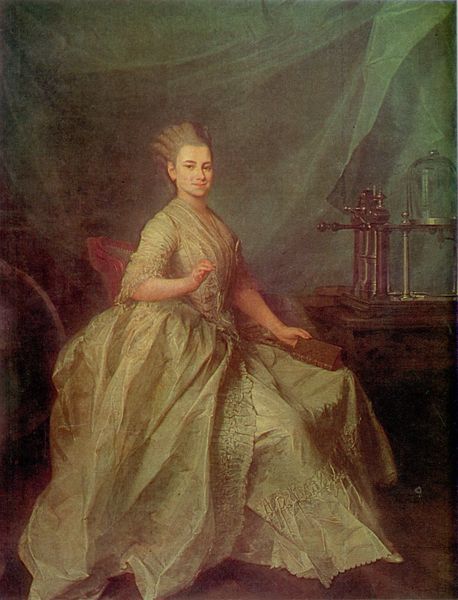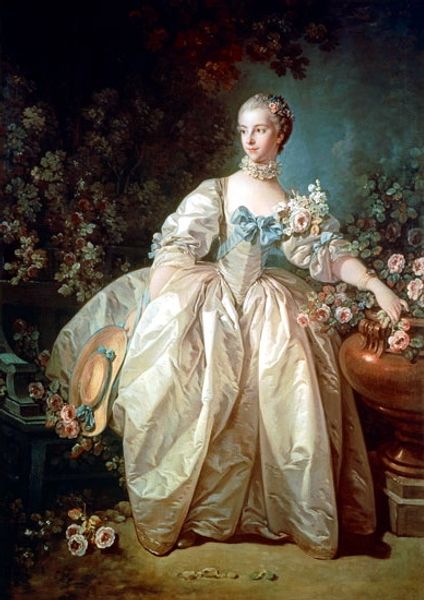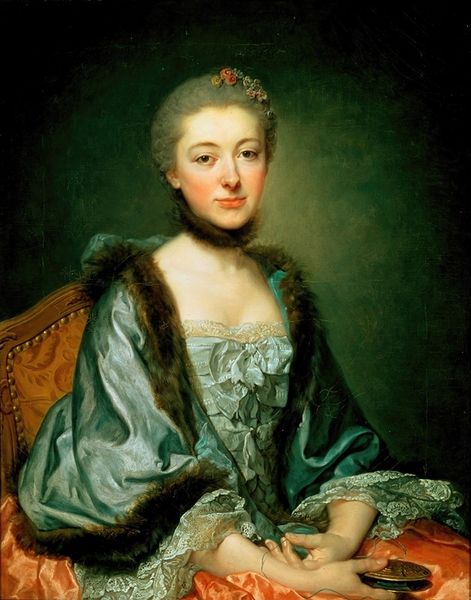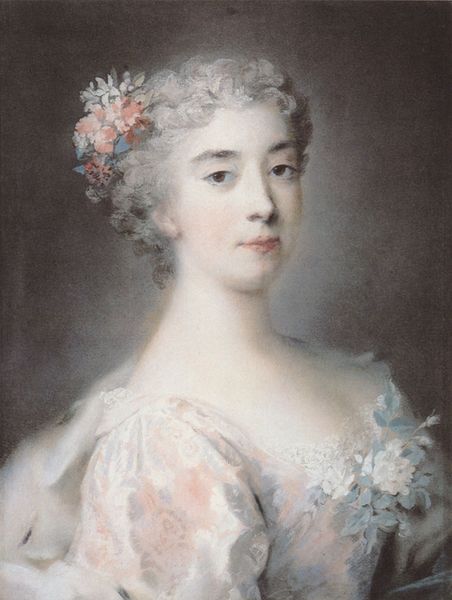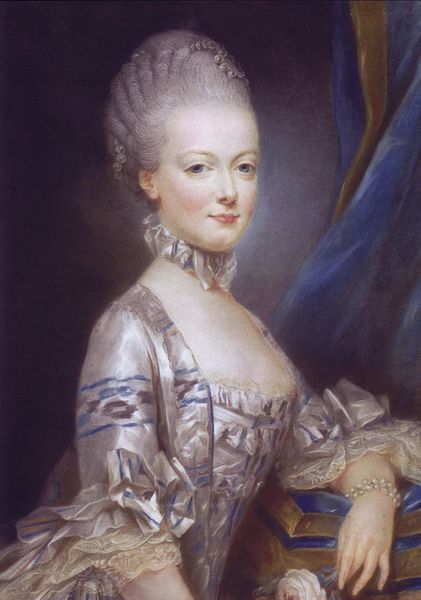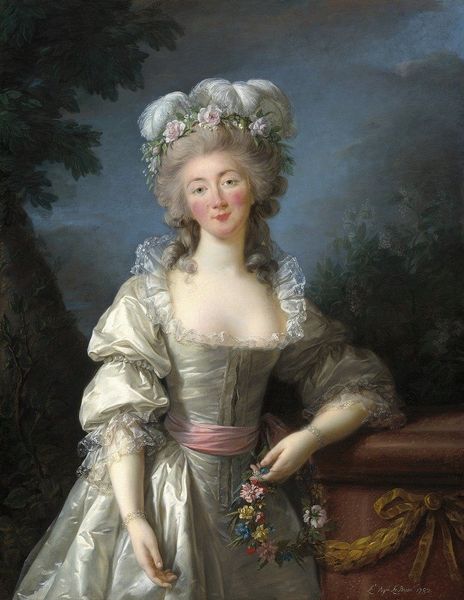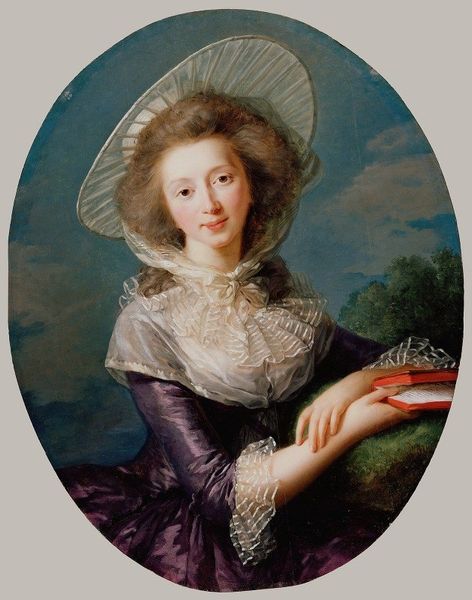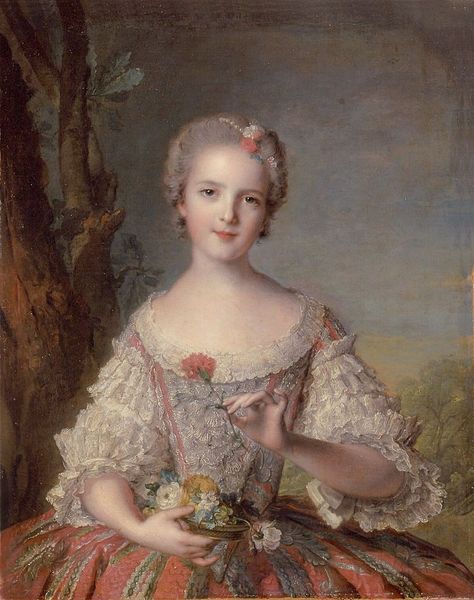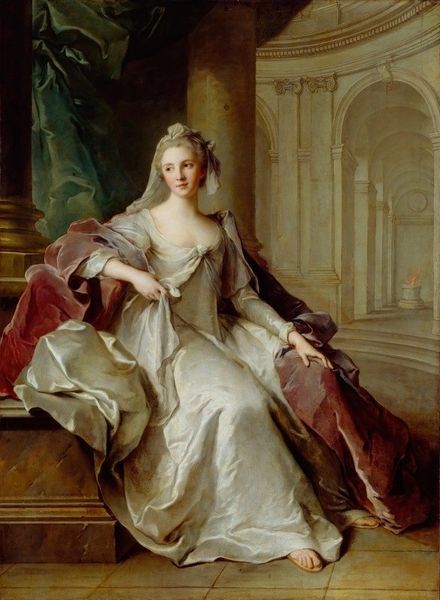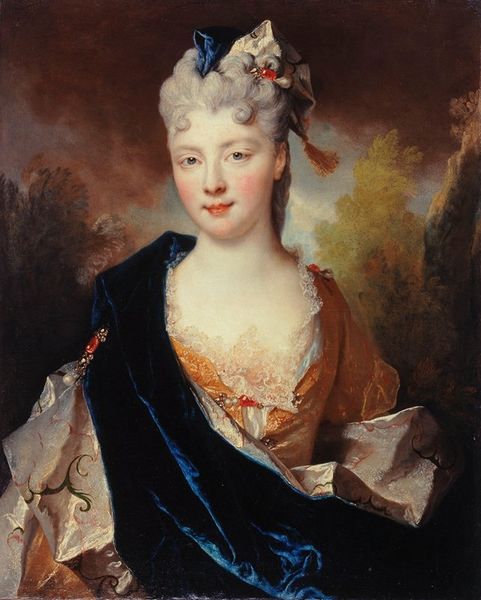
Portrait of Suzanne Curchod (Madame Jacques Necker) Wearing a White Satin Dress
0:00
0:00
painting, oil-paint
#
portrait
#
fancy-picture
#
painting
#
oil-paint
#
history-painting
#
academic-art
#
rococo
Copyright: Public domain
Curator: Here we see Joseph Duplessis’s "Portrait of Suzanne Curchod (Madame Jacques Necker) Wearing a White Satin Dress," rendered in oil. Duplessis was a prominent portraitist and this depiction offers insight into the cultural values and social position of its sitter. Editor: It’s strikingly luminous, almost ethereal. The dress seems to melt into the background, all variations on a theme of white and gold. I’m drawn to the textures he’s created – the smooth satin contrasting with the frills. Curator: Precisely. Suzanne Curchod, the wife of the Swiss financier Jacques Necker, held a prominent literary salon. Duplessis captures her intellectual presence. Note the scale, as well – the portrait is nearly life-size, mirroring the importance of Necker’s influence in Pre-Revolutionary French society. Editor: I find the rigid pose somewhat detracting. While I understand it communicates status, the formality feels stifling. The colour palette emphasizes the dress, almost objectifying Madame Necker in terms of finery, despite its exquisite technical mastery. Curator: That "objectification," as you call it, tells its own story. Elite women navigated public life through appearances, and portraits like these played a crucial role in establishing their social standing, and often reflected that of their husbands and patrons. Editor: But don't you think the execution almost undermines its historical intent? It's so light and frothy. The details—the way the light catches the fabric, and highlights that spectacular hairdo—overwhelm the narrative weight. Curator: True, Duplessis excelled in capturing the visual appeal demanded by his clientele, which arguably played an active part in obscuring underlying socio-economic tensions bubbling below the surface, as you pointed out previously. Editor: Looking closely reveals how an artwork might not necessarily fulfill exactly the initial purpose for its commission—the inherent features are independent elements with unique impacts on any kind of viewer regardless of its time period and origin. Curator: Indeed, and understanding the tensions between artistic style, intended representation, and socio-political circumstances offers a more complex understanding of both the artwork itself and the society it reflects.
Comments
No comments
Be the first to comment and join the conversation on the ultimate creative platform.


